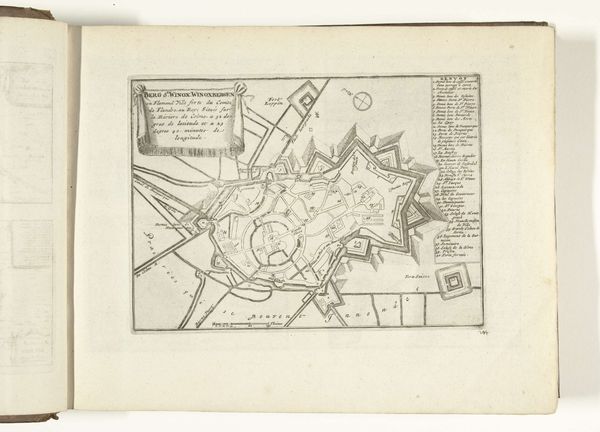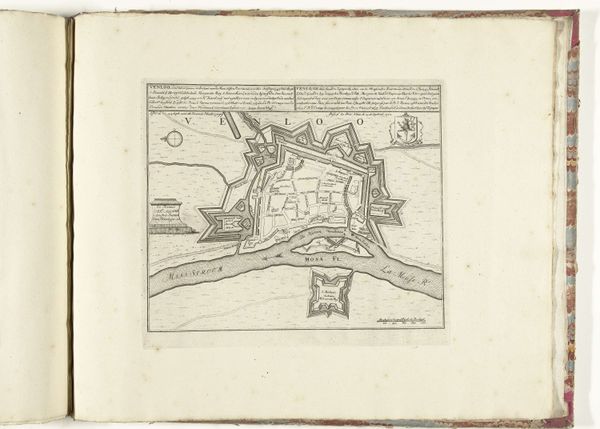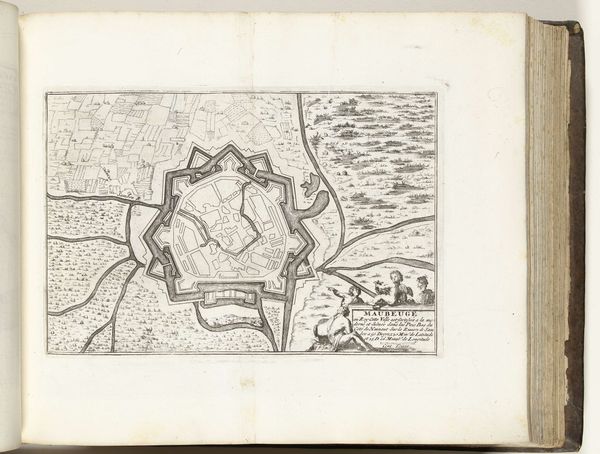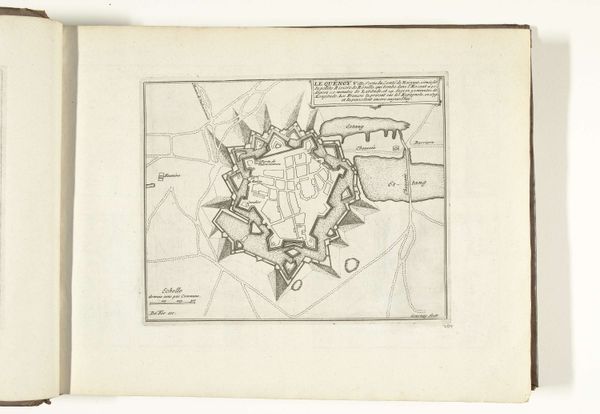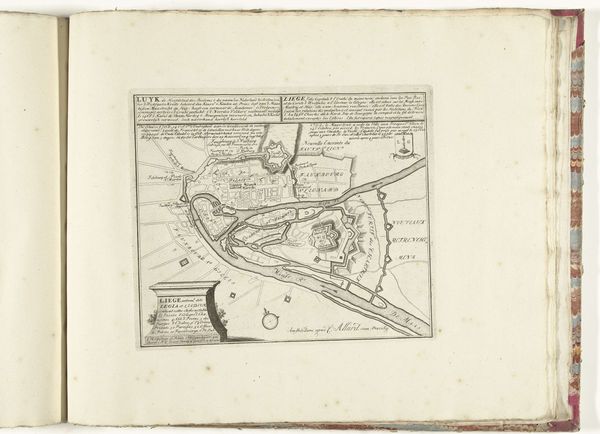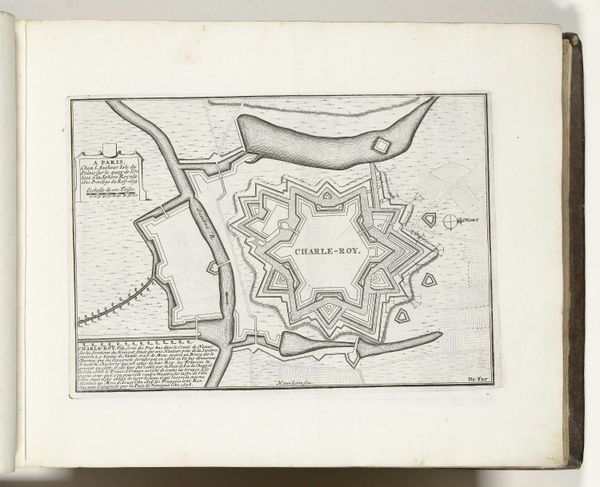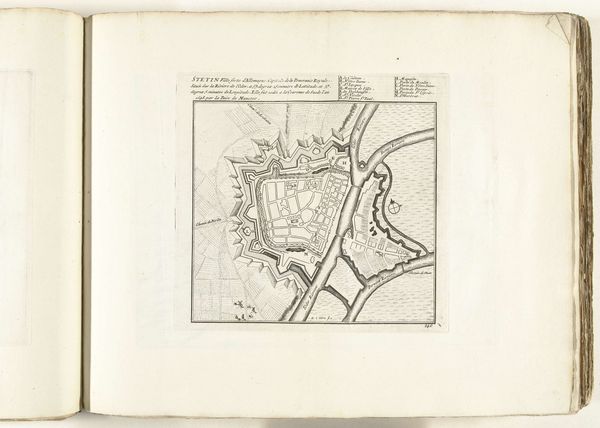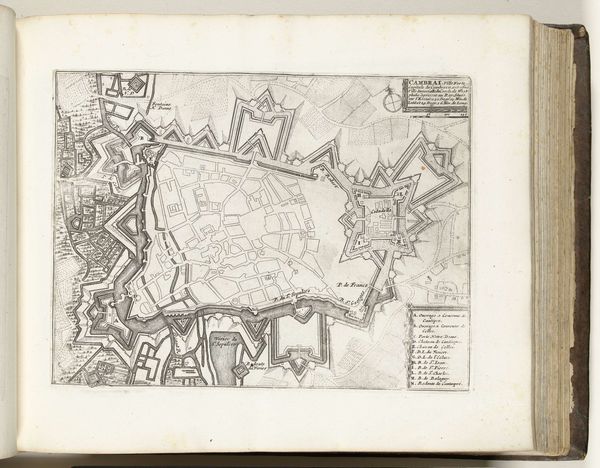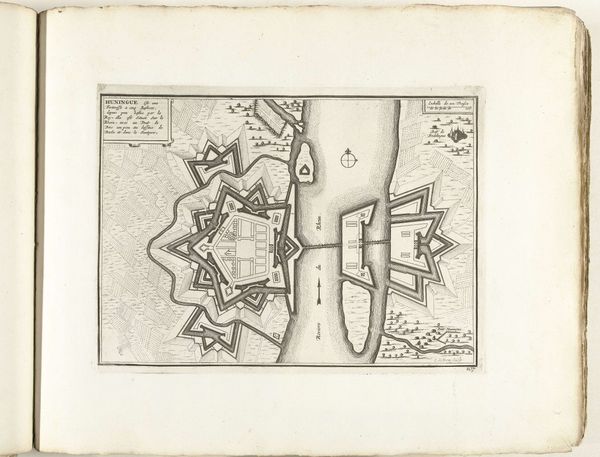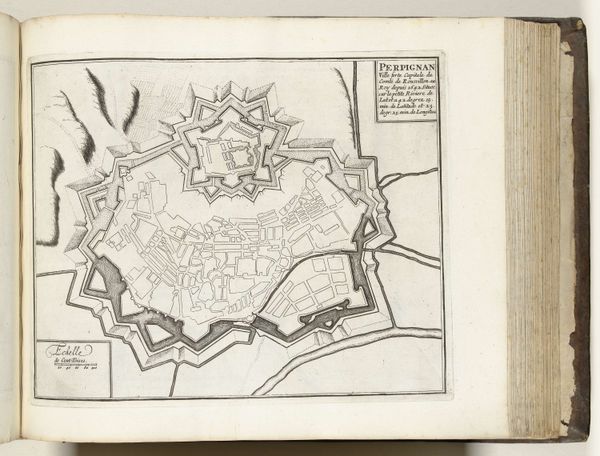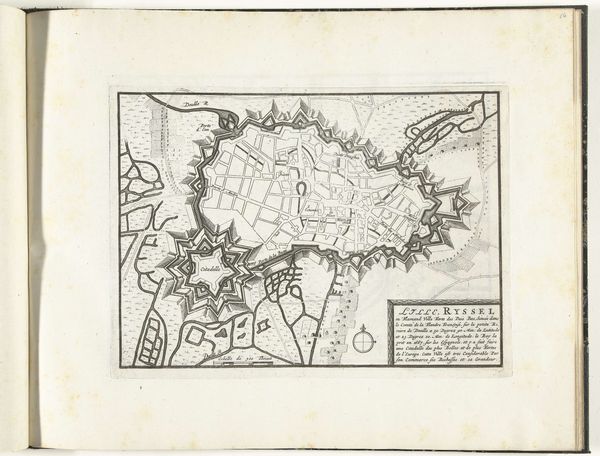
print, engraving
#
baroque
# print
#
cityscape
#
engraving
Dimensions: height 202 mm, width 277 mm
Copyright: Rijks Museum: Open Domain
Curator: This print, “Plattegrond van Sint-Winoksbergen, ca. 1702,” offers a bird’s-eye view of the city in exquisite detail. Rendered in engraving, it’s a remarkable artifact from the early 18th century, held in the collection of the Rijksmuseum. Editor: My first impression is how orderly and regimented it seems. The city's fortifications sprawl in a very geometric way—almost like a carefully constructed spiderweb designed to trap intruders. Curator: Indeed. The baroque period was fascinated by order and control, particularly in the military sphere. City maps like this were crucial tools. Editor: I'm also struck by how the city is presented—it feels so detached, almost bloodless. There are no people depicted, which turns it into this abstracted symbol of power and dominion. Curator: These maps served not just as guides, but also as powerful statements about the authority controlling the territory. Saint-Winoksbergen, like other cities, had strategic and economic importance. This plattegrond asserts possession and surveillance. Editor: And this relates to power dynamics—who gets to be on the map and who gets left out, who holds authority and whose lives are subject to its imposition. The lack of people underscores their marginalization within this representation of the city as an entity primarily for trade and defense. It also brings into view what a city looked like before industrialization truly took hold and the population surged. Curator: It reminds us that even something as seemingly objective as a map is deeply intertwined with politics and social control. The very act of mapping, then, is a project. Editor: Yes! This isn’t simply a depiction of physical space. It's a statement of the times and a reflection on the lives of the people—both within and beyond its fortified boundaries. The engraving preserves an ideology, in addition to preserving a physical likeness. Curator: Absolutely. It’s a chance for us to ask questions about the construction of power, and how the very presentation of a space can reflect societal biases and historical realities. Editor: Considering these issues helps us not just understand this map but maps generally—and the reality around us that is shaped by these representational and documentary processes.
Comments
No comments
Be the first to comment and join the conversation on the ultimate creative platform.
